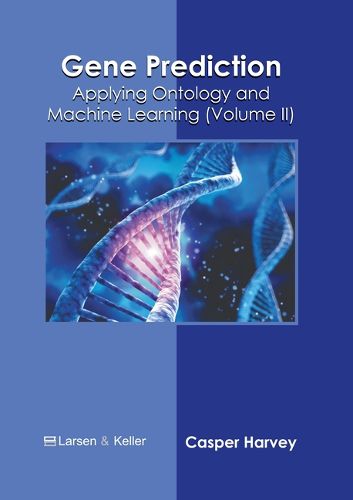Readings Newsletter
Become a Readings Member to make your shopping experience even easier.
Sign in or sign up for free!
You’re not far away from qualifying for FREE standard shipping within Australia
You’ve qualified for FREE standard shipping within Australia
The cart is loading…






Gene prediction refers to the process of identifying the regions of genomic DNA that encodes genes using computational methods. It is an important part of bioinformatics. Gene prediction is the first step for annotating large and contiguous sequences. It aids in identifying the essential elements of the genome including functional genes, intron, splicing sites, exon, and regulatory sites. It is also used in describing the individual genes based on their functions. Protein function prediction is an important part of genome annotation. Lately, high-throughput sequencing technologies have led to development of prediction methods. Gene ontology (GO) is one of the databases that are available for identifying the functional properties of proteins. Research in this domain is now focused on efficiently predicting the GO terms. Researches are ongoing on the use of machine learning algorithms for functional prediction as these algorithms use rule-based approaches to integrate large amounts of heterogeneous data and detect patterns. mSplicer, mGene, and CONTRAST are methods that use machine learning techniques for gene prediction. Gene prediction methods are widely used in fields like structural genomics, functional genomics, and genome studies. This book traces the progress of gene prediction and the application of ontology and machine learning. It is appropriate for students seeking detailed information in this area of study as well as for experts.
$9.00 standard shipping within Australia
FREE standard shipping within Australia for orders over $100.00
Express & International shipping calculated at checkout
Gene prediction refers to the process of identifying the regions of genomic DNA that encodes genes using computational methods. It is an important part of bioinformatics. Gene prediction is the first step for annotating large and contiguous sequences. It aids in identifying the essential elements of the genome including functional genes, intron, splicing sites, exon, and regulatory sites. It is also used in describing the individual genes based on their functions. Protein function prediction is an important part of genome annotation. Lately, high-throughput sequencing technologies have led to development of prediction methods. Gene ontology (GO) is one of the databases that are available for identifying the functional properties of proteins. Research in this domain is now focused on efficiently predicting the GO terms. Researches are ongoing on the use of machine learning algorithms for functional prediction as these algorithms use rule-based approaches to integrate large amounts of heterogeneous data and detect patterns. mSplicer, mGene, and CONTRAST are methods that use machine learning techniques for gene prediction. Gene prediction methods are widely used in fields like structural genomics, functional genomics, and genome studies. This book traces the progress of gene prediction and the application of ontology and machine learning. It is appropriate for students seeking detailed information in this area of study as well as for experts.